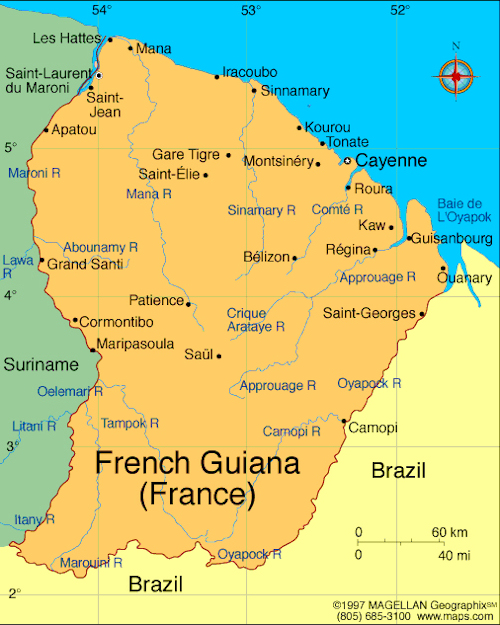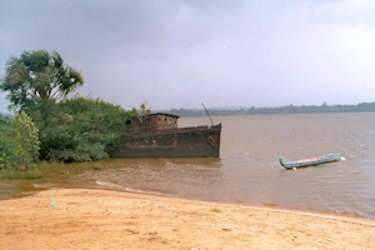French Guiana

Historie
French Guiana was originally inhabited by a number of Native American peoples, among them the Caribs,
Arawak, Emerillon, Galibi, Palikur, Wayampi, and Wayana.
In 1498 French Guiana was first visited by Europeans when Christopher Columbus sailed to the region on his third voyage
and named it the "Land of pariahs".
In 1624 France attempted to settle in the area, but was forced to abandon it in the face of hostility from the Portuguese,
who viewed it as a violation of the Treaty of Tordesillas; in which the new world was devided between Spain and Portugal.
However French settlers returned in 1630 and in 1643 managed to establish a settlement at Cayenne along with some
small-scale plantations. In 1658 the Dutch West Indies Company seized French territory to establish the Dutch colony of
Cayenne. The French returned once more in 1664, and founded a second settlement at Sinnamary
Following the Treaty of Breda on 31 July 1667 the area was given back to France.
After the Treaty of Paris in 1763, which deprived France of almost all her possessions in the Americas other than Guiana and
a few islands, Louis XV sent thousands of settlers to Guiana who were lured there with stories of plentiful gold and easy
fortunes to be made. Instead they found a land filled with hostile natives and tropical diseases. One and a half years later only
a few hundred survived.
Later on, slaves were brought out from Africa and plantations were established along the more disease-free rivers. Exports of
sugar, hardwood, Cayenne pepper and other spices brought a certain prosperity to the colony for the first time.
In 1848 France abolished slavery and the ex-slaves fled into the rainforest. Subsequently called Maroons, they formed a sort
of buffer zone between the Europeans (who settled along the coast and main rivers) and the unconquered (and often hostile) Native
American tribes of the inland regions. Deprived of slave labour the plantations were soon taken over by the jungle, and the
planters ruined.
French Guiana was used as a penal colony and place of exile during the French Revolution, and under Napoleon III
permanent penal camps were established. Devils Island, one of the Īles du Salut, off the coast, became notorious. The penal
colonies were evacuated after World War II.
In 1947, French Guiana became an overseas department of France, and in 1974 it also became an administrative region.
I have visited French Guiana in march 2004
It was part of my visist to Suriname.
These are the places i have seen
Saint Laurant du Maroni
Please let me know when you're having questions.
i would be pleased to help you.
Things to do and other tips
